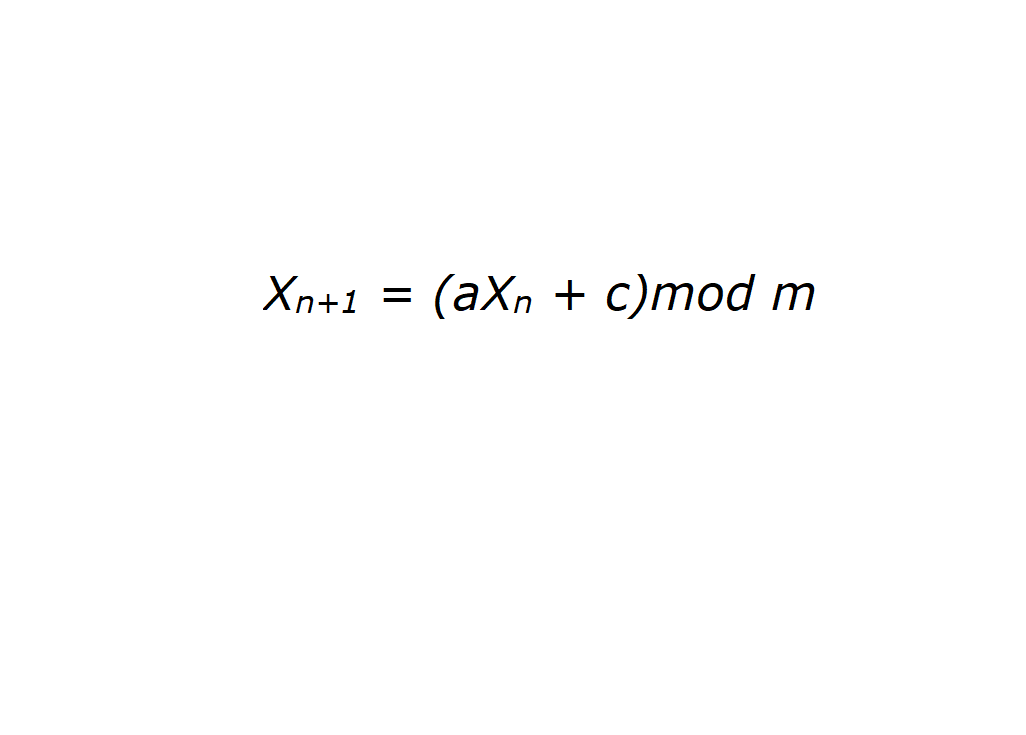𝗛𝗼𝘄 𝗱𝗼 𝘆𝗼𝘂 𝗺𝗮𝗸𝗲 𝗮 𝗰𝗼𝗺𝗽𝘂𝘁𝗲𝗿 𝗴𝗲𝗻𝗲𝗿𝗮𝘁𝗲 𝗿𝗮𝗻𝗱𝗼𝗺 𝗻𝘂𝗺𝗯𝗲𝗿𝘀?
For example, You have a list of numbers, say [1,2,3,4,5,6,7,8,9,10]
What program would you write to pick a random number from the list without using any inbuilt module?
Try it out now!
For example, You have a list of numbers, say [1,2,3,4,5,6,7,8,9,10]
What program would you write to pick a random number from the list without using any inbuilt module?
Try it out now!
You may have noticed that you need a random index to get a random number from the list! You may be surprised to hear that computers are very bad at generating truly random numbers because of their deterministic nature.
What they generate are pseudo-random numbers which means after a long enough time the sequence generated by the computer would eventually repeat itself, I would talk about it in more depth but first, let& #39;s talk about true random numbers.
True Random Number Generators (TRNGs)
Computers can generate truly random numbers by collecting information from unpredictable environmental conditions like mouse movements, fan noise, time.
Computers can generate truly random numbers by collecting information from unpredictable environmental conditions like mouse movements, fan noise, time.
For example: if you wanted to generate an integer value between 1 and 10, and you press the enter key at exactly 7:57:55.287503482 PM , then the computer might take that last digit and use “2” as output.
Interesting isn& #39;t it?
Interesting isn& #39;t it?
Pseudo-Random Number Generators
A pseudo-random process is a process that appears to be random but is not. Pseudo-random sequences typically exhibit statistical randomness while being generated by an entirely deterministic process.
A pseudo-random process is a process that appears to be random but is not. Pseudo-random sequences typically exhibit statistical randomness while being generated by an entirely deterministic process.
We are going to talk about one of the algorithms used to generate pseudo-random numbers -- Linear Congruential generator.
Let& #39;s think of any four numbers:
Xₙ -> is the start value of seed
𝐚 -> number which is going to be multiplied with Xₙ
c -> number which is going to be added to aXₙ
m -> the number by which we are going to divide the resulting equation (aXₙ + c) to get the remainder.
Xₙ -> is the start value of seed
𝐚 -> number which is going to be multiplied with Xₙ
c -> number which is going to be added to aXₙ
m -> the number by which we are going to divide the resulting equation (aXₙ + c) to get the remainder.
By putting the numbers defined in the equation, we get a seed, which we can use again in the equation to provide one more seed thus creating a recursion.
By combining the results we get a random sequence of numbers.
By combining the results we get a random sequence of numbers.
Let& #39;s try out an example :
Let Xₒ(starting number) = 100,
a = 4567, c=7897 and m = 1,000,000
By putting in the equation, we get
X₁ = (aXₒ + c)mod m
= (4567(100)+ 7897)mod 1,000,000
= 464,597
Let Xₒ(starting number) = 100,
a = 4567, c=7897 and m = 1,000,000
By putting in the equation, we get
X₁ = (aXₒ + c)mod m
= (4567(100)+ 7897)mod 1,000,000
= 464,597
Then put the result X₁ in the equation again
X₂ = (aX₁ + c)mod m
= (4567(464597) + 7897)mod 1,000,000
X₂ = 822396
By doing 2 steps we have got a random sequence -> 464597,822396.
Repeat the process until the desired length is achieved.
X₂ = (aX₁ + c)mod m
= (4567(464597) + 7897)mod 1,000,000
X₂ = 822396
By doing 2 steps we have got a random sequence -> 464597,822396.
Repeat the process until the desired length is achieved.
Python code for generating random numbers using Linear Congruential generator (credits: @geeksforgeeks)->
You can learn more about this from:
Numberphile video-> https://youtu.be/SxP30euw3-0
Article">https://youtu.be/SxP30euw3... by freecodecamp -> https://www.freecodecamp.org/news/random-number-generator/
Wikipedia">https://www.freecodecamp.org/news/rand... -> https://en.wikipedia.org/wiki/Random_number_generation">https://en.wikipedia.org/wiki/Rand...
Numberphile video-> https://youtu.be/SxP30euw3-0
Article">https://youtu.be/SxP30euw3... by freecodecamp -> https://www.freecodecamp.org/news/random-number-generator/
Wikipedia">https://www.freecodecamp.org/news/rand... -> https://en.wikipedia.org/wiki/Random_number_generation">https://en.wikipedia.org/wiki/Rand...

 Read on Twitter
Read on Twitter



